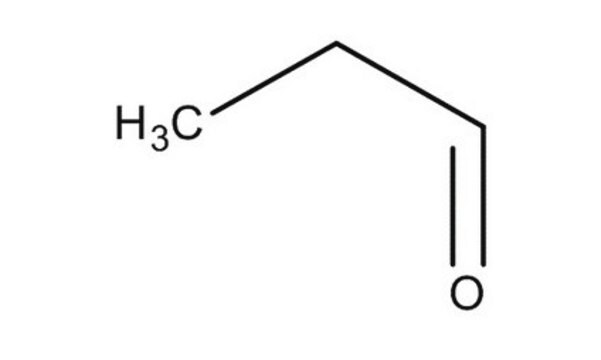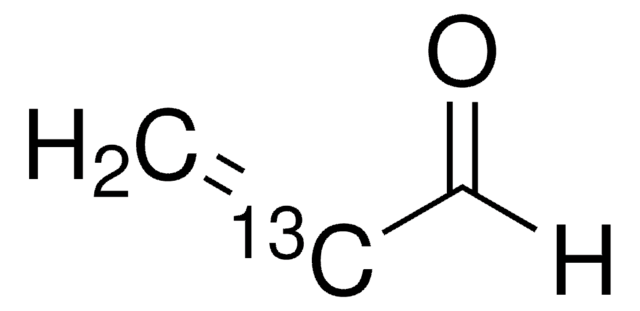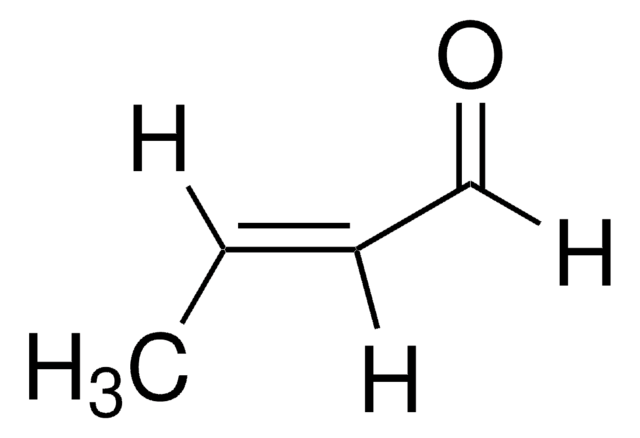64409
Propionaldehyde
analytical standard
Synonym(s):
Propanal
About This Item
Recommended Products
grade
analytical standard
Quality Level
vapor density
2 (vs air)
vapor pressure
18.77 psi ( 55 °C)
4.89 psi ( 20 °C)
Assay
≥98.0% (GC)
autoignition temp.
404 °F
shelf life
limited shelf life, expiry date on the label
expl. lim.
17 %, 26 °F
2.6 %, 31 °F
technique(s)
HPLC: suitable
gas chromatography (GC): suitable
refractive index
n20/D 1.360-1.365
n20/D 1.362 (lit.)
bp
46-50 °C (lit.)
mp
−81 °C (lit.)
density
0.805 g/mL at 25 °C (lit.)
application(s)
cleaning products
cosmetics
flavors and fragrances
food and beverages
personal care
format
neat
SMILES string
[H]C(=O)CC
InChI
1S/C3H6O/c1-2-3-4/h3H,2H2,1H3
InChI key
NBBJYMSMWIIQGU-UHFFFAOYSA-N
Looking for similar products? Visit Product Comparison Guide
General description
Find all available reference materials for compounds listed in 10/2011 here
Application
- Food products and cosmetics using gas-chromatography with photo ionization detection (GC-PID).
- Infant formulas using gas chromatography with flame ionization detection (GC-FID).
- Household products using gas chromatography coupled to mass spectrometry (GC-MS).
Signal Word
Danger
Hazard Statements
Precautionary Statements
Hazard Classifications
Acute Tox. 4 Inhalation - Acute Tox. 4 Oral - Eye Dam. 1 - Flam. Liq. 2 - Skin Irrit. 2 - STOT SE 3
Target Organs
Respiratory system
Storage Class Code
3 - Flammable liquids
WGK
WGK 1
Flash Point(F)
-22.0 °F - closed cup
Flash Point(C)
-30 °C - closed cup
Choose from one of the most recent versions:
Certificates of Analysis (COA)
Don't see the Right Version?
If you require a particular version, you can look up a specific certificate by the Lot or Batch number.
Already Own This Product?
Find documentation for the products that you have recently purchased in the Document Library.
Customers Also Viewed
Protocols
-Tolualdehyde; Valeraldehyde; Isovaleraldehyde
Our team of scientists has experience in all areas of research including Life Science, Material Science, Chemical Synthesis, Chromatography, Analytical and many others.
Contact Technical Service












